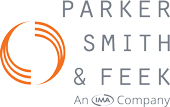Company-owned Vehicles vs Auto Allowance Risk Analysis
| Providing Company-Owned Vehicles | Providing Auto Allowance | |||
| Primary Auto Liability Exposure | Client has primary auto liability exposure when providing company-owned vehicles. | Employee has primary auto liability exposure when using personal owned auto. | ||
| Excess Auto Liability Exposure | Client responsible for excess liability if claim/loss exceeds client’s primary auto liability limits. | Client responsible for excess liability if claim/loss exceeds employees primary liability benefits. Coverage restricted to situations where the non-owned vehicle is being used in connection with client’s business only. | ||
| Physical Damage Exposure (Comprehensive/Collision) | Client responsible for physical damage including insurance deductibles to owned vehicles. | Employee responsible for physical damage including insurance deductibles to owned vehicle. | ||
| Workers’ Compensation Exposure | Increased exposure – client exposed to injuries while traveling to/from work. As client is self-insured this is a significant exposure. | No exposure for injuries while traveling to/from work when utilizing a personally owned vehicle. | ||
| Carpooling | Liability to injury for passengers in client-owned vehicle. | No exposure for injuries while traveling to/from work when utilizing a personally owned vehicle. | ||
| Insurance Premiums | Hardening insurance market. As this continues to occur, costs for commercial insurance may rise to a point making it difficult to make a business case for continuing to have a business fleet. | Reduced Insurance premiums as primary liability and physical damage transferred to employee. | ||
| Administration | Fleet management requires the administrative management of vehicle selection, insurance, registration, fuel, ongoing maintenance, resale, etc. | Administration required for tracking insurance coverage to ensure adequate limits and appropriate business use endorsement provided. | ||
| Maintenance and Care | Control of owned vehicles to set requirements for safe operation and maintenance. Able to utilize tools like fleet analytics to effectively enforce fleet safety rules. | Without standards firmly in place, the type condition and age of car, there may be a potential for the employee receiving the allowance to use a sub-standard or unsafe vehicle. | ||
| Driver Controls | Drivers who risk losing their rights to operate a company-owned vehicle or understand the liability impact to their employers may be motivated to be more cautious while driving. | There are typically no minimum driving requirements for granting an employee a vehicle allowance. | ||
| Personal Use Exposure | Even with restricted personal use of fleet vehicles, personal use exposure remains unavoidable, especially when a personal or family emergency makes such use necessary. The exposure to fleet vehicle accidents is even greater if family members drive the vehicles on an unauthorized basis. | No personal use exposure for non-owned vehicles. | ||
| Reputation and Branding | Corporate logo is a billboard to the community and a bad driver or drivers can damage the company brand. | No exposure to company brand. | ||
| Attracting and Retaining Staff | Often a benefit or perk provided by your competition. | Not providing a company vehicle may expose employer to a competitive disadvantage to attract and retain employees. | ||
*Either Option – Driver background checks should be performed on an annual basis to ensure the driver is worthy of driving for company business.

